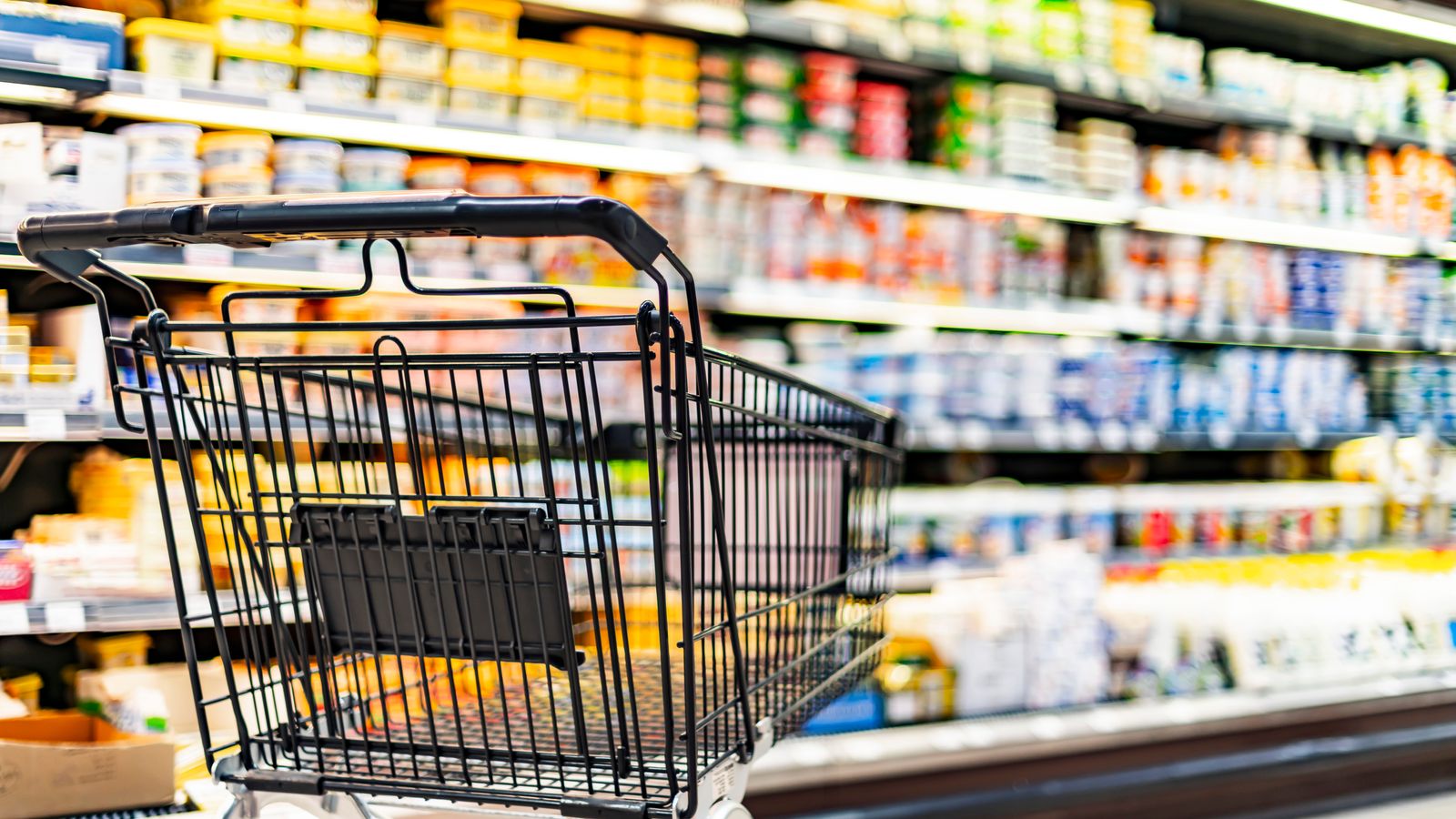Grocery inflation eases to ‘slowest monthly rate this year’

The pace of grocery inflation has eased to its slowest monthly rate this year, according to industry data that backs hopes the worst may be over.
Kantar Worldpanel, which tracks supermarket sales and prices, reported a rate of 16.5% over the four weeks to 11 June.
That was down from the 17.2% figure revealed a month ago.
It marks the third month in a row that the rate of price growth in the sector has softened – but the report acknowledged it was no cause for celebration given the wider pressures on household bills amid the cost of living crisis.
Grocery inflation, it said, was still being most propped up by the cost of eggs, “ambient cooking sauces” and frozen potato products.
The latter item includes the national favourite, the humble chip, as potato costs remain elevated Europe-wide due to high production costs and poor crop yields.
The headline Kantar grocery inflation figure backed up an assertion by the chief executive of Tesco last Friday that the worst was over for industry prices, despite cost pressures remaining in several other areas including energy and staff wages.
Please use Chrome browser for a more accessible video player
1:49
Tesco: Food inflation is easing
Supermarket chains are under pressure to keep the pace of increases fair given a Competition and Markets Authority (CMA) inquiry and a government threat to potentially cap the price of essentials.
The government is targeting a halving of the rate of inflation this year but food costs have consistently held back an easing.
Advertisement
The grocery sector has denied any suggestion of profiteering, insisting that prices reflect the real picture across the supply chain.
Retailers, who argue that competition has been intense since the emergence of the discounters, have been cutting prices in the past few weeks.
Please use Chrome browser for a more accessible video player
5:55
Richard Walker, Iceland’s managing director on the interest free loans the supermarket offers customers to help them buy food, which he says could be rolled out across the industry.
Marks & Spencer was the latest, on Monday, to reveal lower prices for 70 everyday items.
Morrisons, the country’s fifth largest chain, also announced that it was cutting the prices of 47 products by an average of over 25%.
Sainsbury’s, Tesco and Asda have also made similar adjustments since the end of Kantar’s reporting period a week ago.
Fraser McKevitt, head of retail and consumer insight at Kantar, said of its data: “This is the lowest rate of grocery price inflation we’ve seen in 2023, which will be a relief to shoppers and retailers.
Please use Chrome browser for a more accessible video player
1:36
Higher grocery wages a drag on food inflation
“But prices rising at 16.5% isn’t something to celebrate and it’s still the sixth highest monthly figure in the past 15 years.
“Price rises are now being compared to the increasing rate of grocery inflation seen last summer, which means that it should continue to fall in the coming months, a welcome result for everyone.”
The latest official inflation figures are due to be released on Wednesday.
They are tipped, by a Reuters news agency poll of economists, to show the consumer prices index measure dropping back to 8.4% in May from 8.7% the previous month.
However, it will not be enough for the Bank of England to hold off on another interest rate rise the following day.
Financial markets see a 0.25 percentage point increase to 4.75% as a certainty on Thursday.
That is because data is suggesting that inflation is becoming ingrained in the economy while the latest official wage figures show the gap between pay rises and the rate of inflation is shrinking fast.